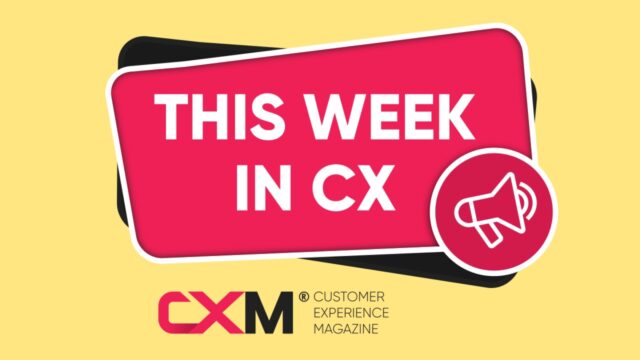May 27, 2025
Why Gen Z is rethinking workplace communication

By the time Isobel McWilliams enters a meeting room, she’s already attuned to the signals no one says out loud. Some colleagues will dive into conversation. Others prefer a Slack DM. And then there’s the new Gen Z hire, efficient on a screen, hesitant with small talk, and visibly more comfortable sending an emoji than picking up the phone.
McWilliams, head of HR at The Adaptavist Group, isn’t surprised. She’s spent the past few years studying these patterns—how different generations work together, clash, and sometimes simply misread each other.
“Gen Z’s communication style is entirely shaped by digital-first experiences,” she said. “That creates strengths, but also tension.”
A different kind of misunderstanding
According to The Adaptavist Group’s Workplace Communication Atlas, nearly half of all employees say misinterpreting tone is their biggest communication issue. For Gen Z, those misunderstandings often stem from everyday tools: emojis, punctuation, and even typing speed.
It’s not unusual, McWilliams explained, for something as small as a full stop at the end of a sentence to be read as passive-aggressive.
“To Gen Z, a period can feel cold or even hostile. Meanwhile, older colleagues might think adding an emoji in a work message is unprofessional. These aren’t just quirks; they’re the new frontline of workplace friction,” she said.
In fact, 43% of Gen Z workers have already experienced misunderstandings caused by emoji use, and 23% say they interpret full stops as rude. For teams that span multiple generations, it’s easy to see how misread messages can escalate into larger problems. When 89% of teams report disagreements over digital tools themselves, the divide becomes an operational issue.
The emoji gap
If communication is the glue that holds workplace relationships together, then it’s no wonder the office can sometimes feel like it’s coming unstuck. Gen Z’s comfort with emojis and shorthand reflects a deeper shift in how they process tone, express emotion, and define professionalism.
Yet, this isn’t a generation that’s failing to communicate. They’re simply using a different language: one built for speed, clarity in brevity, and multitasking across platforms.
“They’re navigating Slack, email, Zoom, and AI chatbots often simultaneously,” said McWilliams. “That agility is an asset. But it also leaves little room to develop traditional skills like reading body language or active listening.”
Especially in hybrid and remote environments, opportunities for those skills to grow are limited. Without casual desk chats or informal coffee runs, younger employees miss out on the unspoken lessons that once came with office life. Many enter the workforce fluent in messaging but rusty when it comes to navigating nuance face-to-face.
Relearning human connection
How can workplaces bridge this communication gap? According to McWilliams, it starts with empathy on all sides.
“Older generations often view Gen Z’s preferences as a lack of professionalism,” she said. “Meanwhile, younger employees see traditionalists as slow or outdated. We need to move beyond those stereotypes.”
McWilliams advocates for structured mentoring and regular face-to-face opportunities, not just to develop skills, but to build understanding. Reverse mentoring, in particular, has proven valuable at Adaptavist. Gen Z employees help older colleagues navigate new tools or AI platforms while gaining confidence in verbal and interpersonal skills.
Clear digital communication guidelines help too, especially when they’re inclusive of diverse styles rather than prescriptive.
“We’re not trying to force everyone into one way of working,” McWilliams said. “We’re aiming to create a culture where people can bring their full selves to work—emojis, phone aversion, and all.”
Beyond the stereotypes
It would be unfair to reduce generational dynamics to tech habits alone. Social context plays a huge role. From the Great Recession to the rise of climate activism, Gen Z has come of age in a world that demands adaptability. Many value transparency, inclusivity, and meaningful work over hierarchy or formality.
“They’re not just digital natives. They’re value-driven, experimental, and collaborative. If you want to understand Gen Z, don’t look at how fast they type, look at what they care about,” McWilliams said.
In many ways, this age group is shaping a workplace that better reflects the world outside it. From their willingness to use AI to translate workplace jargon, to their commitment to mental health and sustainability, Gen Z is pushing organisations toward a more human and more flexible future.
Designing for the future
Phonophobia—an aversion to making or receiving phone calls—is very much present, with over half of Gen Z workers envious of their older colleagues’ phone confidence.
Instead of forcing them into uncomfortable scenarios, many companies are designing quieter, private “phone zones” and offering verbal communication workshops to ease the transition.
In global terms, the differences are even more pronounced. Australian workers report the highest digital tool conflicts, likely due to rapid AI adoption. German professionals resist generational labels altogether. And across markets, there’s one constant: email, still the universal workplace default, despite its many flaws.
McWilliams remains optimistic. “The friction we’re seeing now is growing pain,” she said. “When we stop framing generational differences as problems and start treating them as sources of strength, that’s when real collaboration happens.”
The future of work may not look or sound like anything that came before. It might use AI to clean up grammar, swap emojis for nuance, or let a Gen Z employee skip the phone call entirely.



